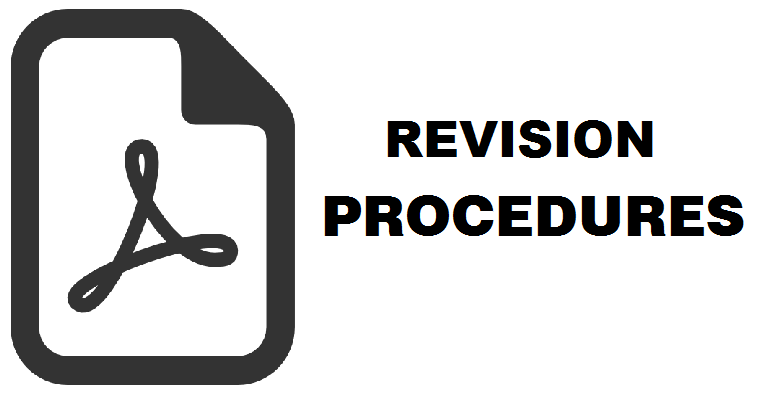Pengaruh Kerapatan Vegetasi Penutup Lahan terhadap Karakteristik Resesi Hidrograf pada Beberapa Subdas di Propinsi Jawa Tengah Dan Propinsi DIY
Bokiraiya Latuamury(1*), Totok Gunawan(2), Slamet Suprayogi(3)
(1) Fakultas Geografi, Universitas Gadjah Mada, Yogyakarta
(2) Fakultas Geografi, Universitas Gadjah Mada, Yogyakarta
(3) Fakultas Geografi, Universitas Gadjah Mada, Yogyakarta
(*) Corresponding Author
Abstract
ABSTRAK Penelitian ini dilakukan di Propinsi Jawa Tengah dan Propinsi DIY, dilatarbelakangi oleh penurunan daya dukung lingkungan seperti rusaknya kawasan hutan dan berkurangnya luas tutupan lahan hutan, yang dapat mempengaruhi perilaku aliran air. Dengan adanya perubahan tutupan lahan akan berdampak pada berubahnya sifat-sifat hidrologi seperti koefisien aliran, debit dan karakteristik hidrograf aliran. Indikator kerusakan hutan dapat dilihat dari karakteristik hidrograf. Evaluasi respon DAS berupa hidrograf aliran akibat adanya perubahan penutup lahan menjadi sangat penting untuk dianalisis karena merupakan tolok ukur dalam setiap penentuan kebijakan terkait dengan penanganan banjir dan tanah longsor. Oleh karena itu, penelitian ini bertujuan untuk (1). mengkaji karakteristik kerapatan vegetasi penutup lahan dan keterkaitannya dalam ekosistem DAS, (2). mengkaji karakteristik aliran dasar (koefisien resesi) pada beberapa sub-DAS tersebut, dan (3). menganalisis pengaruh kerapatan vegetasi penutup lahan terhadap karakteristik hidrograf aliran khususnya aliran dasar pada sub DAS yang diteliti. Metode penelitian yang digunakan adalah metode survei data sekunder pada rekaman data AWLR/SPAS untuk analisis resesi hidrograf dan koefisien resesi (Krb), dan interpretasi citra Landsat ETM+ untuk transformasi indeks vegetasi NDVI dikorelasikasi dengan data kerapatan vegetasi untuk mempresentasikan karakteristik kerapatan vegetasi. Selanjutnya hasil transformasi indeks vegetasi NDVI kemudian diujikorelasikan dengan karakteristik resesi (koefisien resesi) untuk menganalisis pengaruh kerapatan vegetasi penutup lahan terhadap karakteristik resesi hidrograf. Hasil uji statistik NDVI dengan koefisien resesi menunjukkan terdapatnya korelasi antara nilai NDVI dan koefisien resesi pada R2 = 0,1427, F = 2.17 tidak berpengaruh nyata pada taraf signifikan 1% sebesar 0.1646 (lampiran 1.2b). Analisis korelasi antara variabel independen (NDVI penutup lahan) dengan variabel dependen (koefisien resesi) memiliki korelasi sangat lemah sebesar 0,077. Hasil ini menunjukkan bahwa parameter kerapatan vegetasi NDVI sangat lemah untuk mengontrol keberadaan aliran-aliran rendah. Karena besarnya simpanan (storage) airtanah tergantung pada besarnya air yang mencapai akuifer. Setelah sumbangan air pada akuifer terhenti, maka air yang tertampung di akuifer akan mengalami pengatusan yang besarnya tergantung kondisi akuifer tersebut. Gerakan air pada akuifer disebabkan oleh gaya gravitasi, kecepatan dan jumlahnya terutama dipengaruhi oleh karakteristik batuan. Karakteristik batuan mempengaruhi pergerakan airtanah, diketahui dari daya hantar hidrolik batuan tersebut.
ABSTRACT This research was conducted in Central Java and DIY province, as a respond to the decrease of environment capacity such as forest destruction and widespread loss of forest land cover which affect water flow behavior. Land cover change will affect the hydrological properties such as coefficient, rate, and hydrograph characteristics of flow. The indicators of forest destruction can be seen through hydrograph characteristics. Flow hydrographic as an evaluation of river catchment responses to land cover change becomes very important to analyze because it is a benchmark in determination any policy about flood and landslide handling. Therefore, the aims of this study are: (1) to examine the characteristic of land cover vegetation density and its association in river catchment ecosystem, (2) to examine base flow characteristics (coefficient of recession) at these river catchments, and (3) to analyze the influence of land cover vegetation density on flow’s hydrograph characteristic, especially base flow at river catchments. The method used in this research is secondary data survey on AWLR/SPAS data record in order to analyze hydrograph recession and coefficient of recession (Krb), and to interpret ETM Landsat image for NDVI vegetation index transformation for the characteristic of vegetation density. The results of NDVI vegetation index transformation then tested it’s correlated with recession characteristics (coefficient of recession) to analyze the influence of land cover vegetation density on hydrograph recession characteristic. The results showed there is an average value of vegetation density (NDVI) for the river catchments and most of it has mediocre vegetation density level with the percentage of land cover vegetation less more than 30%. Most of base flow recession characteristic (coefficient of recession) lay on relatively high range, i.e. 0.661 to 0.980. Correlation analysis between independent variable (land cover NDVI) with dependent variable (coefficient of recession) is very weak, only 0.077. This result shows that the parameter of NDVI vegetation density can be combined with aquifer formation to control the existence of lower flow. Because the magnitude of soil water storage is depend on water volume that reach the aquifer, the arrangement of optimal hydrogeology condition along dry season (no rain season) depend on geological aquifer condition.
Keywords
Full Text:
PDF (Bahasa Indonesia)Article Metrics
Refbacks
- There are currently no refbacks.
Copyright (c) 2016 Majalah Geografi Indonesia

This work is licensed under a Creative Commons Attribution-ShareAlike 4.0 International License.
Volume 35 No 2 the Year 2021 for Volume 39 No 1 the Year 2025
ISSN 0215-1790 (print) ISSN 2540-945X (online)








